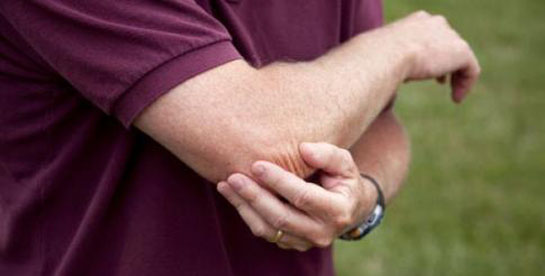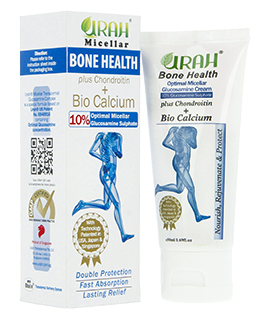Carrying around extra pounds increases stress on the joints, which may lead to arthritis of the knees. The good news is, you don't have to lose a lot to make a difference. When you walk, your knees absorb a force equal to about 3 times your body weight. So losing just 10 pounds actually relieves each knee of about a 30-pound load with every stride you take.
The first stages of osteoarthritis may be silent; mild cartilage damage typically has no symptoms. Arthritis is most likely to show up in hands and weight-bearing joints, including the knees, hips, spine, lower back, neck, and end joints of the fingers. But it's only when there is significant cartilage loss that you'll notice real pain and loss of joint function.
It isn't always easy to distinguish RA from osteoarthritis. Both cause stiff, achy joints and morning stiffness. In OA, the stiffness goes away after 15 to 20 minutes and worsens with activity. But in RA, the stiffness lasts longer, can linger for hours, and improves with activity.
Unlike OA, which affects primarily the hips and knees, RA tends to attack the hands and feet. If you have RA, your painful joints will be red and warm. RA may cause fever and flulike symptoms, too. RA tends to alternate between periods of remission (when you have no or few symptoms) and flares (when the disease is active).
5: Regular exercise may help with arthritis flare-ups
If you're diagnosed with arthritis, exercise will likely be an important part of your feel-better plan. If you want to reduce pain, take fewer medications, improve your flexibility, and avoid joint replacement surgery, you have to exercise, says Justus J. Fiechtner, MD, MPH, an internist in private practice in Lansing, MI. "Medications may take away arthritis pain, but if you don't exercise, you're never going to increase your strength and, therefore, your function," Dr. Fiechtner says. Talk with your doctor to find an exercise plan that's safe for you.
Most types of moderate, low-impact exercise are helpful, but experts especially recommend strength-training, stretching, and water workouts. If you find walking too uncomfortable, swimming is a good option because it doesn't put as much pressure on your knees. In fact, people with arthritis in their knees or hips who did water exercises for 6 weeks reported less joint pain and better overall quality of life, according to the journal Physical Therapy.
6: Cracking your knuckles doesn't trigger arthritis
If you're suffering from osteoarthritis in your hands, it has nothing to do with this tic. One study compared people who had been chronic knuckle crackers for decades with others who never had the habit -- and found no difference in the incidence of osteoarthritis between the two groups. Still, there are reasons to stop cracking: The same study found that knuckle crackers are likelier to have weaker grip strength and greater hand swelling, both of which can limit dexterity.
Since knuckle-cracking is often an indicator of stress or anxiety, it can help to get to the bottom of what's causing your nervousness in the first place -- you may crack your knuckles more often at work than at home, for example -- and address those sources directly. Or try keeping your hands occupied with something less harmful, like doodling.
7: Wearing gloves can soothe stiff hands
If you wake up with stiff, swollen hands, consider wearing gloves to bed. Swelling can occur when body fluids resettle at night, says Mary Moore, MD, a retired professor of medicine and rheumatology at Temple University School of Medicine. Try a snug-fitting pair of stretchy gloves like Isotoners.
8: Loneliness can make pain worse
You know that old Streisand song that says people who need people are the luckiest people in the world? Well, denying those needs can lead to physical pain. "Experiencing chronic pain can be a very isolating experience," says Andrew Bertagnolli, PhD, a former member of the board of directors at the American Chronic Pain Association and psychologist in group practice at the Spine Care Medical Group. "We're social creatures, but pain can make you withdraw from others and may lead to feelings of depression -- which has been linked to increased pain."
To manage your aches, try nurturing your connections. "People who have good social support, and use it well, manage their pain better," says Nomita Sonty, PhD, associate clinical professor in the division of pain medicine of the anesthesiology department at Columbia University. Rather than, say, skip a friend's party because you don't think you can handle sitting for 5 hours, make it a point to go and stay for only an hour. Also, support groups can remind you that you're not alone and give you advice on how to better manage pain.
9: Natural remedies can be as effective as prescription meds
Pills can offer some relief from arthritis, but natural cures have a bigger payoff in the long run. "The most common pain relief prescribed for arthritis is nonsteroidal anti-inflammatory drugs, or NSAIDS, that kill an estimated 16,500 Americans every year from bleeding ulcers," says Dr. Teitelbaum. To ease aches naturally, Dr. Teitelbaum suggests trying a combination of two cartilage-building nutrients known as glucosamine sulfate and methylsulfonylmethane, or MSM. Taking 750 milligrams of glucosamine sulfate two times a day for at least 6 weeks relieves pain and heals joints by building up the cartilage that protects the ends of bones so they don't run together. For optimum results, take glucosamine with 400 milligrams of MSM three times a day, which may slash inflammatory chemicals called cytokines linked with arthritis pain.
10: Food can help ease arthritis pain
"I've found that eating foods known to fight inflammation, a symptom of both rheumatoid arthritis and osteoarthritis, may ease pain," saysPrevention advisor and integrative health expert Andrew Weil, MD. He recommends that your weekly diet include several servings of anti-inflammatory omega-3 fatty acids from foods such as wild Alaskan salmon and other cold-water fish, freshly ground flaxseed, omega-3-fortified eggs, and walnuts. Season meals with ginger and turmeric as often as possible; these spices appear to possess anti-inflammatory properties.
You may have heard that certain vegetables, such as tomatoes, potatoes, peppers, and eggplant, can worsen arthritis pain. Weil says he's seen little good scientific evidence to support this theory. However, two ingredients known to trigger inflammation are polyunsaturated vegetable oils (such as corn and soy oils) and the partially hydrogenated oils found in many margarines, vegetable shortenings, and processed foods.


No comment yet